SUMMARY
This is AI generated summarization, which may have errors. For context, always refer to the full article.
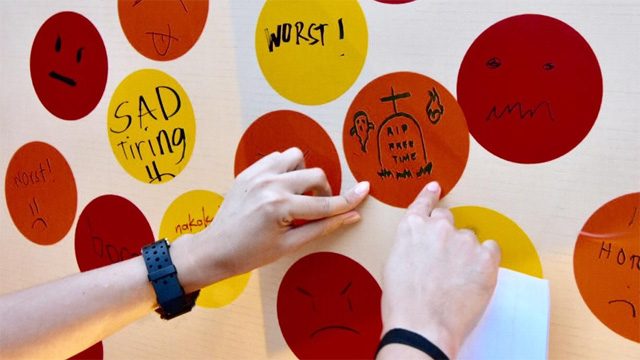
MANILA, Philippines – “R.I.P Free Time,” said one bright orange sticker. “Exhausting. Kaiyak.” said another yellow one. And all around these, there were many other circles scrawled with sad-faced and crying emojis, all expressing varying degrees of dismay and frustration.
These statements peppered a pile of massive cardboard boxes that appeared along 5th Avenue, Bonifacio Global City last Friday, November 17. This wasn’t a hugot wall dedicated to unrequited love – these words and emojis were people’s thoughts about traffic in Metro Manila. The sentiment is unanimous – it’s a hassle, a waste of time, and money.
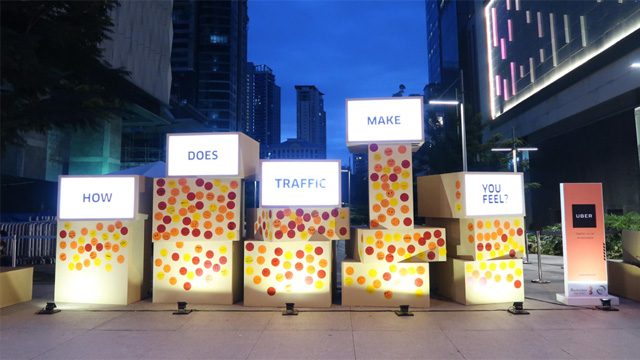
“Everyday I commute going to work, and like most people I get bombarded by jeeps here, cars there, taxis everywhere. It takes such a long time to go to work,” said David, 22. Together with his friend, he stayed for a while at the installation to try the cardboard cars similar to those featured in Uber’s film, “Boxes.”
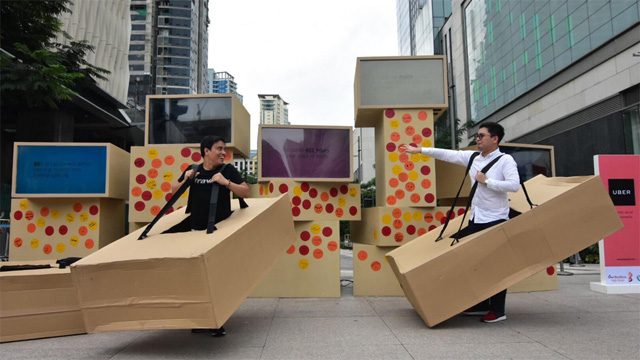
Boxes depicted the chaos of a city overflowing with boxes – a hilarious yet realistic metaphor for the congestion we experience on our own highways here in Manila.
“Traffic is very time-consuming, especially for us students. Instead of us having the energy to do homework and review when we get home, we feel drained,” says Mae, a 20-year-old who studies at Far Eastern University.
According to an independent study commissioned by Uber, Filipinos in Metro Manila spend up to 402 hours every year just stuck in traffic. All that wasted time is equivalent to almost P100,000 lost income. (READ: How much time and money do we waste sitting in traffic and looking for parking?)
That’s why others are doing their best to stay optimistic about the situation – and to constantly seek solutions.
26-year-old Franz, who posted his response in Hangul, says that traffic helped him to learn the Korean language. “I stay in traffic a lot so I end up having more time to practice. Instead of channeling your frustration into something negative, you turn it into something positive,” he said.
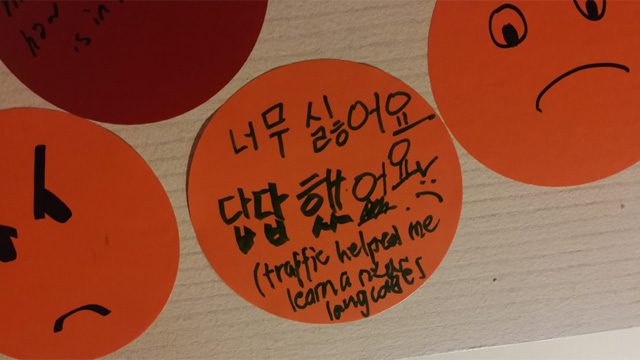
Franz pointed out that improving public transportation is the best way to solve traffic in Metro Manila. But his friend, Michael, added that immediate solutions are just as important.
“I would say urban planning (can solve traffic) but that would take a longer time and it’s too complex. So the fastest way is to use Uber – ridesharing – for the meantime. And even if urban planning has been improved, I think ridesharing is still a very valuable solution,” Michael said.
Athlete Jeron Teng, who also dropped by, agreed that ridesharing services like Uber offer a much better alternative to wasting time on the road. “For an athlete like me, ridesharing is more convenient. Sometimes after practice I would rather relax and share a ride than drive or look for parking,” he said.
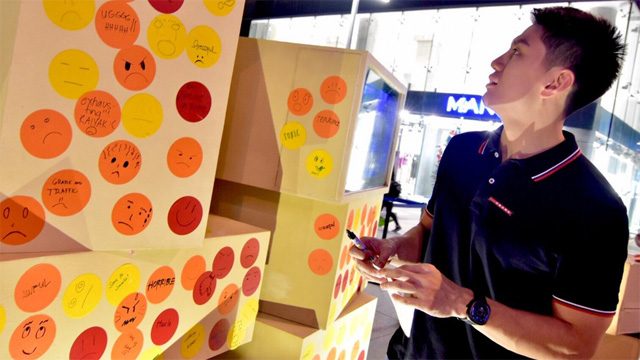
Aside from sharing their thoughts on traffic, participants in the installation also learned how they can do their part to ease congestion in the city, through ridesharing. They all agreed that less traffic on the road doesn’t just mean more time or money – it also empowers them to help our cities become better. – Rappler.com
Add a comment
How does this make you feel?
There are no comments yet. Add your comment to start the conversation.